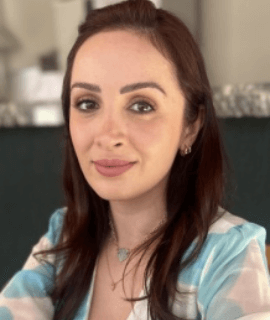Title: Effects of the association between hydroxyapatite and photobiomodulation on bone regeneration
Abstract:
Hydroxyapatite (HA)-based ceramics are widely used as artificial bone substitutes due to their advantageous biological properties, which include biocompatibility, biological affinity, bioactivity, ability to drive bone formation, integration into bone tissue and induction of bone regeneration (in certain conditions). Phototherapy in bone regeneration is a therapeutic approach that involves the use of light to stimulate and accelerate the process of repair and regeneration of bone tissue. There are two common forms of phototherapy used for this purpose: Low-Level Laser Therapy (LLLT) and LED (Light Emitting Diode) Therapy. Understanding the mechanisms of laser therapy and its effects combined with hydroxyapatite has gaps. Therefore, this review was designed based on the PICO strategy (P: problem; I: intervention; C: control; O: result) to analyze the relationship between PBM therapy and hydroxyapatite. The bibliographic search, with the descriptors “hydroxyapatite AND low-level laser therapy” and “hydroxyapatite AND photobiomodulation” resulted in 43 articles in the PubMed/MEDLINE database, of which 1 was excluded for being a duplicate and another 33 due to inclusion/exclusion criteria, totaling 9 articles for qualitative analysis. In the Web of Science database, we obtained 40 articles, of which 7 were excluded for being duplicates, 1 for not having the full text available and another 17 due to inclusion/exclusion criteria, totaling 15 articles for qualitative analysis. The most used biomaterial was composed of hydroxyapatite and β-tricalcium phosphate in a proportion of 70%–30%. In photobiomodulation, the gallium-aluminum-arsenide (GaAlAs) laser prevailed, with a wavelength of 780 nm, followed by 808 nm. The results indicated that the use of laser phototherapy improved the repair of bone defects grafted with the biomaterial, increasing the deposition of HA phosphate as indicated by biochemical estimators, spectroscopy and histological analyses.
Audience Take Away:
The audience will learn about the application of hydroxyapatite ceramics as bone substitutes, the effectiveness of phototherapy in accelerating bone regeneration, and recent findings on the interaction between phototherapy and hydroxyapatite in bone treatments.
This work can help in clinical practice in the following ways:
- Selection of Biomaterials: Clinicians will be able to make more informed decisions about using hydroxyapatite ceramics as bone substitutes, based on evidence showing the effectiveness of these materials in bone integration and regeneration.
- Integration with Photobiomodulation Therapy: Understanding the combined effects of hydroxyapatite and phototherapy (laser or LED) will allow healthcare professionals to optimize treatment protocols, improving clinical outcomes in bone regeneration and healing of bone defects.
- Treatment Protocols: Data on specific laser wavelengths and their combinations with biomaterials will aid in choosing the best parameters for phototherapy, providing more efficient and personalized treatment for patients.
- Improvement of Clinical Outcomes: With evidence that phototherapy can enhance bone repair when combined with hydroxyapatite, clinicians can apply these techniques to accelerate patient recovery from bone defects, potentially reducing recovery time and improving graft integration.
- Evidence-Based Guidelines: The qualitative analysis and results presented provide a solid foundation for developing evidence-based clinical guidelines, contributing to practices based on research and proven outcomes.
- Education and Training: The findings can be used to train healthcare professionals on best practices and the effective combination of biomaterials and adjunct therapies, ensuring that the latest and most effective approaches are implemented in clinical practice.
Therefore, this work can enhance the effectiveness of bone treatments, provide better outcomes for patients, and inform clinical practice with robust evidence.




